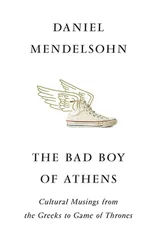Mytilene was constantly seething with political and social dramas occasioned by rivalries and shifting alliances among aristocratic clans. Sappho belonged to one of these – there’s a fragment in which she chastises a friend ‘of bad character’ for siding with a rival clan – and a famous literary contemporary, a poet called Alcaeus, belonged to another. Alcaeus often refers to the island’s political turbulence in his poems, and it’s possible that at some point Sappho and her family fled, or were exiled, to Southern Italy: Cicero refers in one of his speeches to a statue of the poet that had been erected in the town hall of Syracuse, in Sicily. The Victorian critic John Addington Symonds saw the unstable political milieu of Sappho’s homeland as entwined with the heady erotic climate of her poems. Lesbos, he wrote in an 1872 essay on the poet, was ‘the island of overmastering passions’.
Some things seem relatively certain, then. But when it comes to Sappho’s personal life – the aspect of her biography that scholars and readers are most eager to know about – the ancient record is confused. What did Sappho look like? A dialogue by Plato, written in the fourth century BC, refers to her as ‘beautiful’; a later author insisted that she was ‘very ugly, being short and swarthy’. Who were her family? The Suda (which gives eight possible names for Sappho’s father) asserts that she had a daughter and a mother both named Kleïs, a gaggle of brothers, and a wealthy husband named Kerkylas, from the island of Andros. But some of these seemingly precious facts merely show that the encyclopedia – which, as old as it is, was compiled fifteen centuries after Sappho lived – could be prone to comic misunderstandings. ‘Kerkylas’, for instance, looks a lot like kerkos , Greek slang for ‘penis’, and ‘Andros’ is very close to the word for ‘man’; and so the encyclopedia turns out to have been unwittingly recycling a tired old joke about oversexed Sappho, who was married to ‘Dick of Man’.
Many other alleged facts of Sappho’s biography similarly dissolve on close scrutiny. Was Sappho really a mother? There is indeed a fragment that mentions a girl named Kleïs, ‘whose form resembles golden blossoms’, but the word that some people have translated as ‘daughter’ can also mean ‘child’, or even ‘slave’. (Because Greek children were often named for their grandparents, it’s easy to see how the already wobbly assumption that Kleïs must have been a daughter in turn led to the assertion that Sappho had a mother with the same name.) Who were the members of her circle? The Suda refers by name to three female ‘students’, and three female companions – Atthis, Telesippa, and Megara – with whom she had ‘disgraceful friendships’. But much of this is no more than can be reasonably extrapolated from the poems, since the extant verses mention nearly all those names. The compilers of the Suda , like scholars today, may have been making educated guesses.
Even Sappho’s sexuality, which for general audiences is the most famous thing about her, has been controversial from the start. However exalted her reputation among the ancient literati, in Greek popular culture of the Classical period and afterward, Sappho was known primarily as an oversexed predator – of men. This, in fact, was the ancient cliché about ‘Lesbians’: when we hear the word today we think of love between women, but when the ancient Greeks heard the word they thought of fellatio. In classical Greek, the verb lesbiazein – ‘to act like someone from Lesbos’ – meant performing oral sex, an activity for which inhabitants of the island were thought to have a particular penchant. Comic playwrights and authors of light verse portrayed Sappho as just another daughter of Lesbos, only too happy to fall into bed with her younger male rivals.
For centuries, the most popular story about her love life was, in fact, one about a hopeless passion for a handsome young boatman called Phaon, which allegedly led her to jump off a cliff. That tale has been embroidered, dramatized, and novelized over the centuries by writers from Ovid – who in one poem has Sappho abjectly renouncing her gay past – to Erica Jong, in her 2003 novel Sappho’s Leap . As fanciful as it is, it’s easy to see how this melodrama of heterosexual passion could have been inspired by her verse, which so often describes the anguish of unrequited love. (‘You have forgotten me / or you love someone else more.’) The added element of suicide suggests that those who wove this improbable story wanted us to take away a moral: unfettered expressions of great passion will have dire consequences.
As time went on, the fantasies about Sappho’s private life became more extreme. Midway through the first century AD the Roman philosopher Seneca, tutor to Nero, was complaining about a Greek scholar who had devoted an entire treatise to the question of whether Sappho was a prostitute. Some ancient writers assumed that there had to have been two Sapphos: one the great poet, the other the notorious slut. There is an entry for each in the Suda .
The uncertainties plaguing the biography of literature’s most famous Lesbian explain why classicists who study Sappho like to cite the entry for her in Monique Wittig and Sande Zeig’s Lesbian Peoples: Material for a Dictionary (1979). To honour Sappho’s central position in the history of female homosexuality, the two editors devoted an entire page to her. The page is blank.
The controversies about Sappho’s sexuality have never been far from the centre of scholarship about her. Starting in the early nineteenth century, when classics itself was becoming a formal discipline, scholars who were embarrassed by what they found in the fragments worked hard to whitewash Sappho’s reputation. The title of one early work of German scholarship is ‘Sappho Liberated from a Prevalent Prejudice’: in it, the author acknowledged that what Sappho felt for her female friends was ‘love’ but hastened to insist that it was in no way ‘objectionable, vulgarly sensual, and illegal’, and that her poems of love were neither ‘monstrous nor abominable’.
The eagerness to come up with ‘innocent’ explanations for the poet’s attachment to young women persisted through the late nineteenth century and into the twentieth. The most tenacious theory held that Sappho was the head of a girls’ boarding school, a matron whose interest in her pupils was purely pedagogical. (One scholar claimed to have found evidence that classes were taught on how to apply makeup.) Another theory made her into an august priestess, leading ‘an association of young women who devoted themselves to the cult of the goddess’.
Most classicists today have no problem with the idea of a gay Sappho. But some have been challenging the interpretation of her work that seems most natural to twenty-first-century readers: that the poems are deeply personal expressions of private homoerotic passion. Pointing to the relentlessly public and communitarian character of ancient Greek society, with its clan allegiances, its endless rounds of athletic games and artistic competitions, its jammed calendar of civic and religious festivals, they wonder whether ‘personal’ poetry, as we understand the term, even existed for someone like Sappho. As André Lardinois, the co-author of the new English edition, has written, ‘Can we be sure that these are really her own feelings? … What is “personality” in such a group-oriented society as archaic Greece?’
Indeed, the vision of Sappho as a solitary figure pouring out her heart in the women’s quarters of a nobleman’s mansion is a sentimental anachronism – a projection, like so much of our thinking about her, of our own habits and institutions onto the past. In Lawrence Alma-Tadema’s Sappho and Alcaeus , the Poetess and four diaphanously clad, flower-wreathed acolytes relax in a charming little performance space, enraptured as the male bard sings and plays, as if he were a Beat poet in a Telegraph Hill café. But Lardinois and others have argued that many, if not most, of Sappho’s poems were written to be performed by choruses on public occasions. In some lyrics, the speaker uses the first-person plural ‘we’; in others, the form of ‘you’ that she uses is the plural, suggesting that she’s addressing a group – presumably the chorus, who danced as she sang. (Even when Sappho uses the first-person singular, it doesn’t mean she was singing solo: in Greek tragedy, the chorus, which numbered fifteen singers, regularly uses ‘I’.)
Читать дальше












